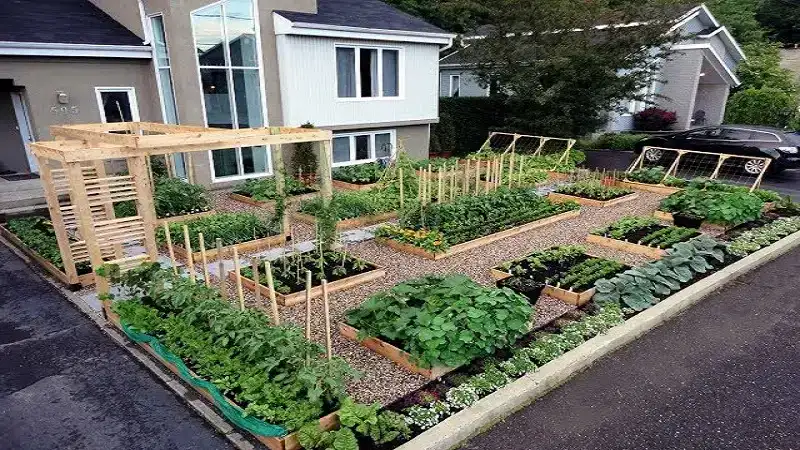Gardening is an art that combines creativity, functionality, and sustainability. A well-designed garden bed can transform your outdoor space into a thriving oasis, filled with vibrant plants, flowers, and vegetables. Whether you’re a seasoned gardener or a beginner, understanding the principles of designing garden beds kdagardenation can help you create an aesthetically pleasing and highly productive garden.
Understanding Garden Bed Design
Before you start designing garden beds kdagardenation, it’s essential to consider a few critical aspects: space, soil type, climate, plant selection, and layout. A well-planned garden bed ensures that your plants thrive and complement each other while adding beauty to your landscape.
Choosing the Right Location
The success of your garden beds largely depends on location. Here are key factors to consider:
- Sunlight Exposure: Most plants require at least 6 hours of direct sunlight daily. Observe your yard throughout the day to determine the sunniest spots.
- Soil Quality: Conduct a soil test to determine pH levels, drainage capacity, and nutrient content. Amend the soil with organic matter if necessary.
- Water Accessibility: Choose a spot close to a water source to make irrigation easier and more efficient.
- Wind Protection: Consider installing barriers like fences, shrubs, or trellises to shield plants from strong winds.
Types of Garden Beds
When designing garden beds kdagardenation, you can choose from several types, each with its benefits and aesthetic appeal.
- Raised Garden Beds: These are elevated above the ground, offering better drainage, improved soil quality, and easier maintenance.
- In-Ground Garden Beds: Traditional and cost-effective, these beds are dug directly into the soil, allowing plant roots to spread naturally.
- Container Garden Beds: Ideal for small spaces or urban settings, container gardening provides flexibility and mobility.
- Keyhole Garden Beds: A circular design with a composting basket at the center, promoting sustainability and efficient watering.
Garden Bed Layouts
Choosing the right layout is crucial for maximizing space and ensuring plant health.
- Row Layout: Ideal for vegetable gardens, allowing easy access for maintenance and harvesting.
- Square Foot Gardening: A grid-based system that optimizes space and minimizes weeds.
- Companion Planting Layout: Arranges plants that benefit each other by repelling pests and enhancing growth.
- Herb Spiral: A spiral-shaped raised bed that creates microclimates for different herbs.
Step-by-Step Guide to Designing Garden Beds
Step 1: Planning Your Garden Bed
Start by sketching a rough design of your garden bed, considering shape, size, and placement. Decide on the primary purpose—whether it’s for vegetables, flowers, or herbs.
Step 2: Preparing the Soil
Healthy soil is the foundation of a thriving garden. Follow these steps:
- Remove weeds and debris from the designated area.
- Loosen the soil using a garden fork or tiller.
- Add compost or organic matter to enhance fertility.
- Level the soil and ensure proper drainage.
Step 3: Selecting Plants
Choose plants based on climate, soil type, and garden aesthetics. Some common plant categories include:
- Flowers: Marigolds, petunias, and lavender for color and fragrance.
- Vegetables: Tomatoes, carrots, and peppers for a productive edible garden.
- Herbs: Basil, mint, and rosemary for culinary and medicinal uses.
Step 4: Designing Pathways and Borders
Pathways make your garden accessible and visually appealing. Consider using:
- Gravel or stepping stones for a rustic look.
- Wooden planks for a natural touch.
- Bricks or concrete for a more structured appearance.
Borders define the garden beds and can be made from:
- Decorative stones or bricks.
- Wooden logs or metal edging.
- Living borders with low-growing plants.
Step 5: Installing Irrigation Systems
Proper watering ensures healthy plant growth. Options include:
- Drip Irrigation: Delivers water directly to the roots, reducing waste.
- Soaker Hoses: Provides slow, deep watering.
- Sprinkler Systems: Suitable for larger garden beds.
Maintenance Tips for Healthy Garden Beds
Regular maintenance is key to a flourishing garden. Here are some essential tips:
- Mulching: Apply organic mulch to retain moisture, suppress weeds, and enrich soil.
- Pruning: Trim plants to promote growth and remove dead or diseased parts.
- Fertilization: Use natural compost, manure, or organic fertilizers to nourish the soil.
- Pest Control: Implement natural remedies like neem oil, companion planting, or beneficial insects.
Sustainable Gardening Practices
Eco-friendly gardening enhances biodiversity and reduces environmental impact.
- Composting: Recycle kitchen waste to create nutrient-rich compost.
- Rainwater Harvesting: Collect rainwater for irrigation to conserve water.
- Native Planting: Use local plant species to support pollinators and reduce water needs.
Conclusion
Designing garden beds kdagardenation is an enjoyable and rewarding endeavor that brings beauty and sustainability to your outdoor space. By carefully planning location, layout, and plant selection, you can create a stunning garden that thrives year-round. Whether you prefer raised beds, in-ground planting, or container gardening, applying these principles will help you cultivate a lush and productive garden. Start today and transform your landscape into a flourishing paradise!Read More FameWhite
